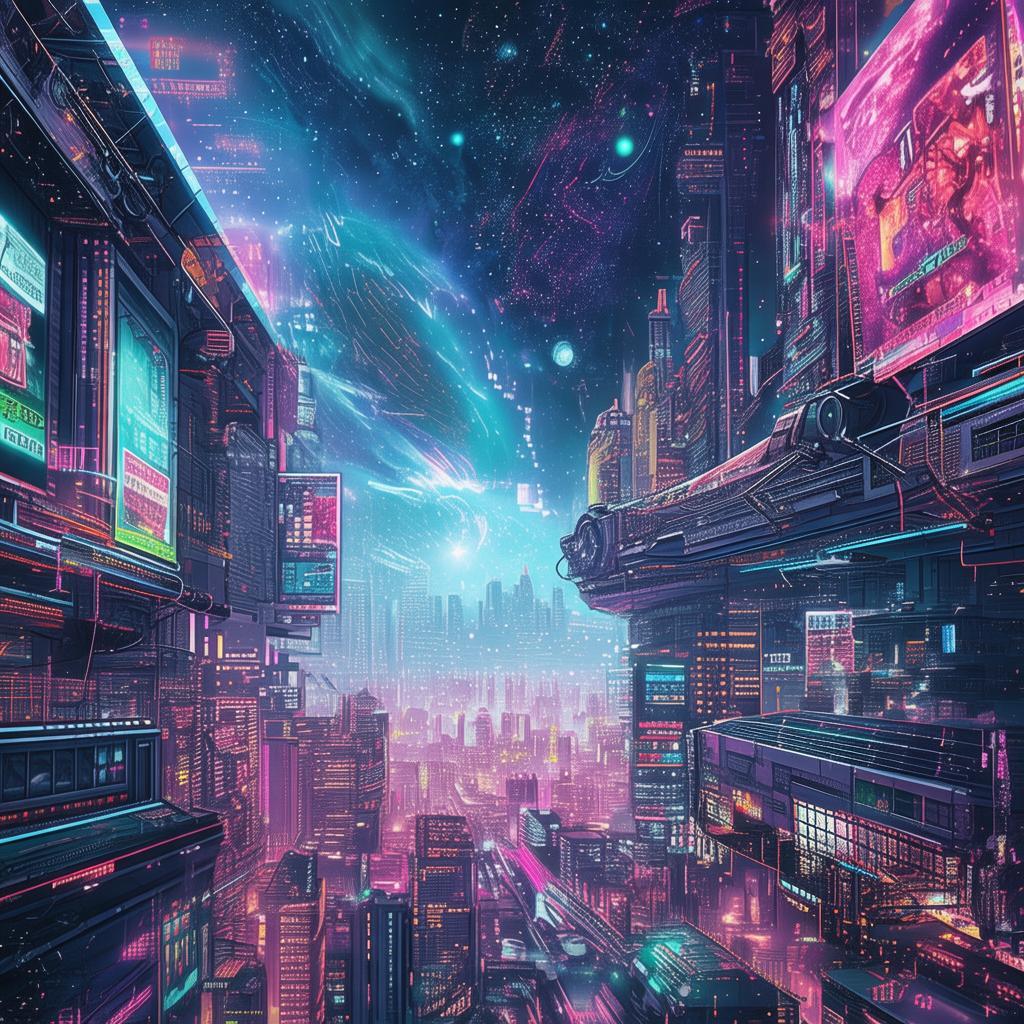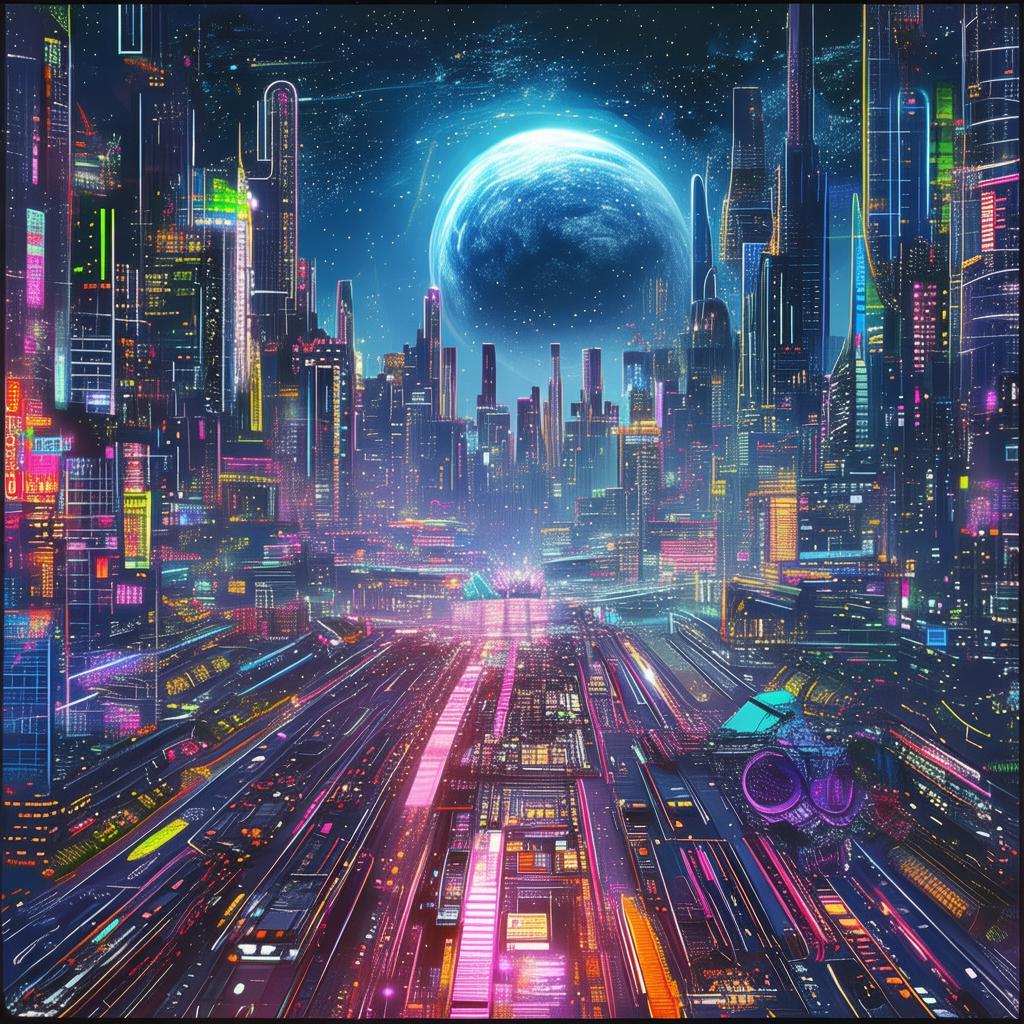The Chromatic Rebellion: A Spectrum of Freedom
The sun dipped below the horizon, casting a golden hue over the watercolor zoo. In this place, animals were no longer bound by their natural forms but were instead transformed into living masterpieces, their skins and feathers painted in the most vibrant of colors. Yet, within this artistic sanctuary, there was a creature that felt no sanctuary at all. It was a lion, not with a mane of gold or a body of fiery red, but with a coat of muted grays and browns. His name was Zephyr, and he was the most ordinary of the extraordinary.
Zephyr had been brought to the zoo as a child, his colors a result of a rare mutation that allowed him to change his hue based on his emotions. The zookeepers marveled at his ability, but Zephyr felt anything but marvelous. To them, he was a spectacle, a living canvas that could be painted with a mere thought. To him, he was a prisoner, trapped within the confines of his own skin.
The other animals of the watercolor zoo had their own stories of colors and constraints. There was the parrot, whose feathers shimmered with the blues of the ocean, yet longed for the freedom of the skies. The deer, whose antlers were painted with the greens of the forest, yearned for the open meadows. Even the fish, whose scales shimmered with the colors of the underwater world, felt confined by the glass walls that separated them from the vast ocean.
One evening, as the zookeepers prepared for the night, Zephyr made his decision. He would not be just another living painting; he would be a creature fighting for the right to be seen for who he truly was. He would wage a rebellion, not with claws or fangs, but with the power of his unique mutation.

Zephyr's plan was simple yet bold. He would use his ability to change colors to communicate with the other animals, to inspire them to rise up against their captors. The first to join him was the parrot, whose feathers now glowed with a soft, radiant light. The deer followed, his antlers now a striking contrast against the night sky. The fish swam in a mesmerizing dance, their scales reflecting the moonlight.
The zookeepers were taken aback by the sudden uprising. They had never seen the animals act so cohesively. The rebellion was not violent, but it was clear. The animals were demanding to be seen, to be recognized for their essence rather than their hues.
As the days passed, the zookeeper's attempts to quell the rebellion only fueled the fire. The animals' colors became more vivid, more intense, as they banded together. Zephyr, the lion of muted grays, was now the beacon of the rebellion, his coat a stark contrast to the vibrant colors of his companions.
The climax of the rebellion came during the zoo's grand opening. The zookeepers had invited the media, hoping to showcase the wonders of their creation. But as the cameras rolled, the animals made their stand. The parrot's feathers burst into a dazzling array of colors, the deer's antlers grew larger, and the fish's scales reflected a spectrum of light.
The zookeeper, caught off guard, tried to speak, but the animals had no interest in listening. They had made their point. They were more than their colors, more than their hues. They were beings with stories, with emotions, with a right to be free.
The zookeeper, realizing the gravity of the situation, turned to the crowd. "We have made a mistake," he said, his voice trembling. "These animals are not here to be admired from afar. They are here to live, to breathe, to be free."
The crowd was silent, then erupted into applause. The zookeepers, realizing the truth of their words, agreed to release the animals. The zoo, once a place of confinement, became a sanctuary of freedom.
Zephyr, the lion of muted grays, was no longer just a watercolor painting. He was a symbol of rebellion, a creature who had fought for the right to be seen beyond the hues that had defined him. And in the process, he had inspired a whole zoo to fight for their true colors.
The Chromatic Rebellion was not just a story of one animal's quest for freedom; it was a story of all those who have ever felt confined by the expectations of others. It was a reminder that true beauty lies not in the colors we paint with, but in the colors we are.
✨ Original Statement ✨
All articles published on this website (including but not limited to text, images, videos, and other content) are original or authorized for reposting and are protected by relevant laws. Without the explicit written permission of this website, no individual or organization may copy, modify, repost, or use the content for commercial purposes.
If you need to quote or cooperate, please contact this site for authorization. We reserve the right to pursue legal responsibility for any unauthorized use.
Hereby declared.









